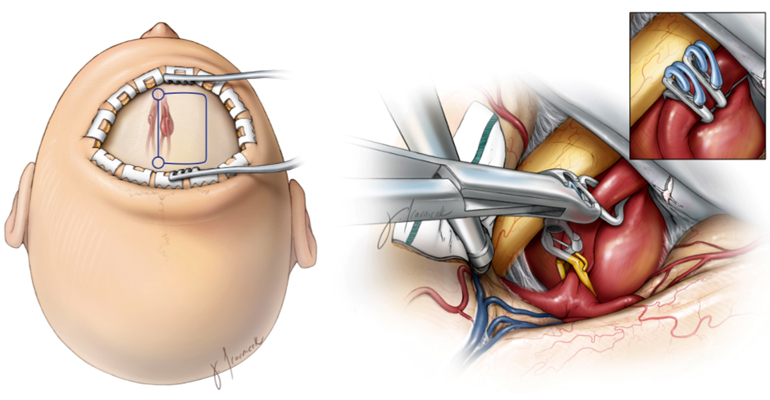

Aneurysm surgeries are procedures performed to treat aneurysms, which are abnormal bulges or weak spots in the walls of blood vessels. Aneurysms can occur in various parts of the body, but they are commonly associated with the brain (cerebral aneurysms) and the aorta (the large artery that carries blood from the heart). The two primary types of aneurysm surgeries are:
Clipping:
Clipping is a surgical procedure in which a small metal clip is placed around the neck of the aneurysm to isolate it from the blood circulation. This prevents the risk of rupture. Clipping is performed through a craniotomy, where a small metal clip is placed at the base of the aneurysm.
Coiling (Endovascular Coiling or Coil Embolization):
Coiling is a minimally invasive procedure performed through an endovascular approach. A catheter is guided through the blood vessels to the site of the aneurysm. Small platinum coils are then inserted into the aneurysm, promoting blood clot formation and sealing off the weakened area.
Flow Diverters:
Flow diverters are stents placed across the neck of the aneurysm to redirect blood flow away from the aneurysm, promoting healing and preventing rupture. This is a newer technique and is often used for complex aneurysms.
Open Repair (Aneurysmectomy):
In open repair, the surgeon makes an incision in the chest or abdomen, depending on the location of the aneurysm. The weakened section of the aorta is replaced with a synthetic graft. This procedure is used for larger aortic aneurysms or those that involve the aortic arch.
Endovascular Aneurysm Repair (EVAR):
EVAR is a less invasive procedure performed through small incisions in the groin. Stent grafts are threaded through blood vessels to the site of the aneurysm. Once in place, the stent graft reinforces the weakened section of the aorta, preventing rupture.
Monitoring:
Patients are closely monitored in the postoperative period for signs of complications, including bleeding, infection, and neurological deficits.
Blood Pressure Management:
Blood pressure control is crucial to prevent stress on the repaired blood vessels, especially after aortic aneurysm surgeries.
Rehabilitation:
Rehabilitation may be necessary for patients who undergo cerebral aneurysm surgeries, particularly if there were neurological deficits before or after the procedure.
Follow-up Imaging:
Follow-up imaging studies, such as CT scans or angiograms, are conducted to assess the success of the surgery and to monitor the repaired blood vessels over time.
Complications:
Complications can include infection, bleeding, blood vessel damage, or adverse reactions to anesthesia.
Recovery Time:
The recovery time varies depending on the type of surgery and the overall health of the patient.
Long-Term Management:
Long-term management may involve lifestyle changes, medication, and regular follow-up appointments to monitor the repaired blood vessels.
The choice of surgical technique depends on factors such as the location, size, and shape of the aneurysm, as well as the patient's overall health. The decision is often made collaboratively by a team of specialists, including vascular surgeons and neurosurgeons. It's important for individuals with aneurysms to discuss the potential risks and benefits of each procedure with their healthcare providers.